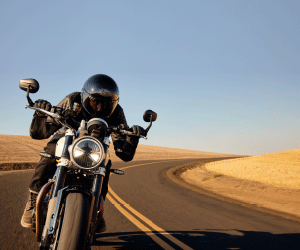In the fast-paced world of MotoGP, where rivalries, friendships, and shifting loyalties are part of the sport’s DNA, the relationship between Aleix Espargaró and Jorge Martín has evolved into a captivating drama. Initially, Espargaró encouraged Martín to join Aprilia, claiming it was a bike capable of winning. However, now that Martín has signed with Aprilia, Espargaró’s outlook on the team’s future has shifted, creating a whirlwind of controversy.
A Friendship Turned Business Partnership
Aleix Espargaró and Jorge Martín’s friendship runs deep, transcending the typical camaraderie seen among MotoGP riders. When Martín faced disappointment with Ducati after being overlooked for a factory seat multiple times, Espargaró played a pivotal role in convincing him to make the leap to Aprilia. Despite Martín’s reservations, Espargaró spent hours discussing the technical aspects and the team dynamics with him, painting a promising picture of the Aprilia project(Motorcycle Sports).
Espargaró was enthusiastic about Martín’s decision, expressing his joy publicly. He viewed Martín’s move as not just a change in team colors but as an opportunity to prove himself on a different stage. Espargaró often highlighted the growth and potential of the Aprilia team, which he had been instrumental in developing from an underdog to a podium contender(Motorcycle Sports).
Espargaró’s Changing Tune
Despite his initial optimism, Espargaró’s tone has noticeably shifted as the reality of the competitive landscape set in. During his discussions with Martín, he had already hinted at the challenges that lay ahead, emphasizing that Aprilia’s bike, while improved, was still not on par with the dominant Ducati machines that Martín was used to riding(Motorcycle Sports).
Espargaró acknowledged that jumping from one of the best bikes on the grid to a machine that still required significant development would be a tough transition for Martín. He noted, “The difficult thing for Jorge will be that I came from P20 and I reached a couple of victories. It’s not easy, but I got used to riding a bike that wasn’t good”(Motorcycle Sports). These remarks underscore Espargaró’s understanding of the struggles that Martín would face, even as he championed the Aprilia cause.
No Future in Aprilia?
Recently, Espargaró’s statements took a more critical turn, suggesting that he sees no future for Aprilia as a top competitor in MotoGP. This revelation contradicts his earlier efforts to sell Martín on the promise of the bike and the team. His comments reflect a sense of frustration with Aprilia’s inability to close the gap with the leading teams, particularly Ducati, which has consistently outperformed Aprilia on various circuits(Motorcycle Sports).
Espargaró’s sentiments resonate with a harsh reality faced by many MotoGP teams: the development curve is steep, and progress is often slower than expected. While Espargaró is proud of the strides made during his tenure, he appears increasingly disillusioned with the bike’s potential to consistently compete at the highest level.
Martín’s Expectations vs. Reality
For Jorge Martín, the decision to switch to Aprilia was not made lightly. Despite being courted by other teams, he chose to follow Espargaró’s lead, swayed by the Spaniard’s conviction and enthusiasm for Aprilia’s potential. Martín’s move was also driven by his frustration with Ducati, where he felt overlooked despite his strong performances. Espargaró’s assurances played a crucial role in this decision, promising Martín a team that valued his talent and offered a bike with room for development(Motorcycle Sports).
However, Martín’s future with Aprilia now looks uncertain, given Espargaró’s evolving narrative. Martín was already aware of the bike’s shortcomings, having expressed doubts during his conversations with Espargaró. Now, he finds himself stepping into a project where the leading rider’s belief in the team’s potential appears to be waning.
The Broader Implications for Aprilia
Espargaró’s public statements reflect a broader challenge for Aprilia. The team’s progress, while notable, has not been enough to consistently challenge the likes of Ducati, Honda, and Yamaha. Aprilia’s journey in MotoGP has been one of slow but steady improvement, yet the gap to the frontrunners remains significant. Espargaró’s mixed messages about the team’s future highlight the frustrations that come with being in the middle of the pack.
Espargaró has often spoken about the emotional and physical toll of pushing a bike that isn’t quite there yet. His pride in leaving a better bike for Martín is tempered by the reality that Aprilia is still far from being a championship contender. This duality — pride in the team’s progress but frustration with its limitations — encapsulates the challenges faced by mid-tier MotoGP teams striving to break into the elite.
A Cautionary Tale of High Hopes and Hard Realities
The saga of Aleix Espargaró and Jorge Martín serves as a cautionary tale in MotoGP. It underscores the complexities of team dynamics, the weight of expectations, and the harsh realities of competing at the sport’s highest level. For Martín, the decision to join Aprilia was a leap of faith, driven by friendship, frustration, and hope. For Espargaró, it was an opportunity to pass the torch to someone he believed could carry on his work.
Yet, as Espargaró’s optimism gives way to doubt, the narrative around Aprilia shifts once more. What began as a story of potential and promise now raises questions about the future trajectory of both Martín and the team. As the new season approaches, all eyes will be on Martín to see if he can succeed where others have struggled — and if Aprilia can finally break through the barriers that have long kept it from MotoGP’s top tier.
This unfolding story reminds us that in the world of MotoGP, talent and determination are only part of the equation; the machinery and the team behind the rider are equally crucial. And for Jorge Martín, the road ahead with Aprilia is paved with both promise and uncertainty











